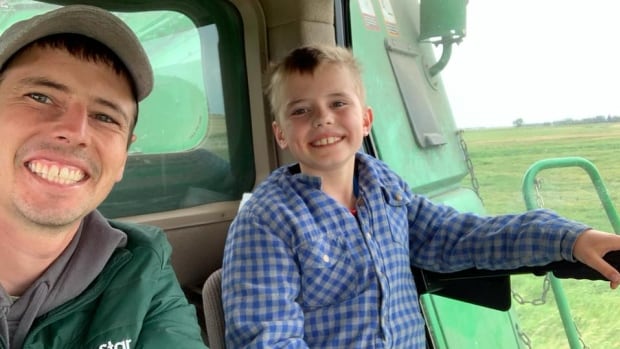Walter Smith’s farm’s roots date back to the 1800s, and it’s survived through extreme weather and challenging markets, but nothing else quite like 2022.
Smith said farming in 2022 carried the “highest stakes” he has seen, with input costs sitting 30 to 40 per cent higher than ever before on his land outside Pilot Mound, about 150 kilometres southwest of Winnipeg.
Trying to recoup those costs is a challenge because the prices of fertilizer, fuel, equipment and repairs are so high, and those costs are not always reflected in crop prices, he said.
He hopes returns start to even out going into 2023.
“I need to recoup some of that added cost, but … you just take what the market gives you,” Smith said.
Crop costs ‘startling’
People across Canada and the world have been feeling the impact of inflation over the past two years, Keystone Agricultural Producers president Bill Campbell said.
“It’s just a difficult scenario to get your head around on how much increase in expenses there is on the farm now,” he said. “It’s startling … what the prices are at this stage.”
Campbell estimates that many producers have seen operation costs double.
“We live in a global marketplace and as these prices are set in that marketplace, farmers are unable to pass along these increased costs and … must absorb them against their bottom line,” he said.
Campbell is encouraged by Bill C 234 reaching the third reading in the House of Commons. It contains provisions to make grain drying and heating of barns exempt from the carbon tax.
“I just don’t have a clear crystal ball on what the future looks like for some of these scenarios, but it is a very challenging time in the agriculture sector with regards to forecasting what it will be like.”

Fifth-generation farmer James Jasper raises purebred cattle and raises crops on about 750 acres of land just north of Hartney, about 250 kilometres southwest of Winnipeg.
The southwestern Manitoba farmer said 2022 may be one of his most expensive years ever.
Jasper described farmers as “price takers,” because they do not decide the worth of grain or livestock and are left to the whims of the market.
He wishes those not in the agriculture industry understood the risks farmers face — especially because the rising prices at the grocery store do not always make their way back to producers. In addition to full-time farming, he works in agricultural sales and his wife works as a nurse to cover their living costs.
“Beef prices are up a bit at this point, but if you break that down to a cost per pound … that translates to $2 a pound,” he said.
“With that $2 a pound I’ve had to feed a cow for a year.… Margins are extremely tight on the cattle side.”

Manitoba Beef Producers president Tyler Fulton said producers have been paying the costs of extreme weather for several years, and in 2022, that was exacerbated by high fuel prices and inflation.
Producers are starting to see some improvements in cattle prices, but they have not kept pace with costs to run operations, Fulton said.
He is “very optimistic” for 2023, especially if producers can see more normal fuel and fertilizer prices. Market signals and the futures market suggest prices could continue to improve.
“I know that there’s there’s great demand for, you know, for high-quality beef, of which Manitoba is a top provider,” Fulton said.
“There’s going to be a shortage of beef and … cow-calf producers might finally be able to participate in some of the increases in prices.”


